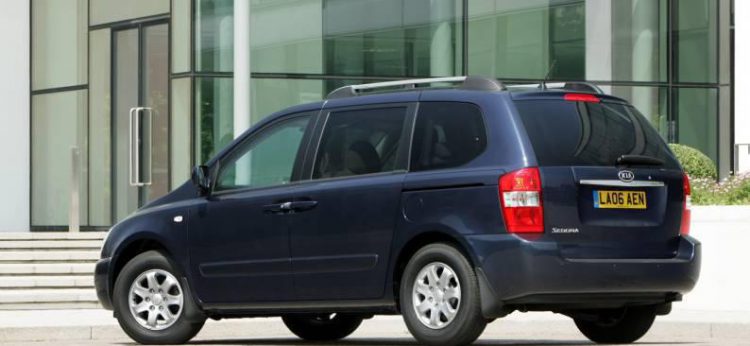Tesla Is Screwed Once Luxury Carmakers Begin Building Real Electrical Cars
Have you ever sat in a fresh Tesla? It feels like something from Starlet Trek. Not in the traditional "Holy crap, I’m driving the future" sense; more in the sense that it feels like a vehicle from a world where traditional standards of wealth have been abolished, and luxury goods have lost cache in favor of technological advancement.
Captain Picard always made that future seem like a nice place to live. But that’s certainly not the world we inhabit today. And that fact is going to spell trouble for Elon Musk’s growing electrical car company unless Tesla can up its interior game post-haste.
Tesla has carved out a nice little niche selling high-end EVs to wealthy customers in part because there’s never been any other vehicle to directly compare them to. If you wished to spend $100,000-plus today on an electrified car that isn’t a Tesla, your best bet would be a Chevy Bolt . and another Chevy Bolt.
But that won’t be the case much longer. By around decade’s end, Mercedes, Porsche, Audi, and BMW, among others, will have released full-blown EVs with Tesla-spec ranges and capabilities. And unlike Tesla, those companies take luxury gravely. They know the value of fine materials, of elegant interior design, of the little touches that help people rationalize spending six figures on a car when they know deep down that a $20,000 vehicle would function just as well.
Just as importantly, those luxury car titans have massive resources and parts supplier networks already in place to buy those lumps in bulk. Daimler, Volkswagen A.G., and the BMW Group have been buying, building, and improving on their luxury cars interiors like their livelihoods depended upon it for decades—because they do—in order to woo the discerning well-off buyer. Tesla hasn’t needed to worry about luxury features because it’s been the only high-end EV in town for harshly a decade. But if Tesla wants to crack into the mainstream market, it needs to be able to challenge on every level.
Outside of the cult of Teslarati, how many high-end car buyers, given the choice, will choose the car with the cabin that looks like this:
…over the one that looks like this?
Some might argue that Tesla’s advantages in other fields are strong enough that the company doesn’t need to waste time on frippery. They might say that, while Mercedes and Audi are working to match the Model S’s range and spectacle, Tesla is prompt on the way to rolling out a true self-driving car—at which point all the old yardsticks for automotive success become obsolete.
But a self-driving car will need more emphasis on interior convenience and luxury, not less. With no need to concentrate on the road, drivers will be left staring at the interior, wondering why they have to wedge themselves into an unnatural seating position to see House of Cards on their projector-screen windshields.
Think about it this way: If you’ve been on your feet all day at an auto display, where all the cars are static and you don’t have to worry about driving, in which car would you rather sit down and relieve for a few minutes—the minimalist Model X, or the opulent seven Series?
Tesla, on some level, must know this. Elon Musk’s wild imagination may spend most of its time spinning up cross-city tunnels, transonic vacuum-tube trains, and the potentially holographic nature of all existence, but some part of him has to be able to see a not-too-distant future where Tesla’s competitors will catch up to the brand’s technological lead, at which point other factors—like convenience, style, and quality—will come into play.
Indeed, the carmaker has already began to make moves suggesting it sees value in improving its interiors. Tesla recently poached Anders Bell, Volvo’s head of interior engineering, to run a similar team at the electrical car company. Anyone who’s been in one of the newest Volvos, like the XC90 SUV for which Bell developed the front seat system, can likely see how good an idea that is.
But with every dollar that flows into Tesla’s coffers seemingly dedicated to boosting production capacity, developing fresh models, and moving the autonomy ball towards the end zone, it’s hard to see where the carmaker will find the capital, financial or political, to boost the car’s vehicles to true luxury-level quality any time soon. Ironically, the more success Tesla has in moving EVs towards mainstream acceptance, the larger this problem will loom.
